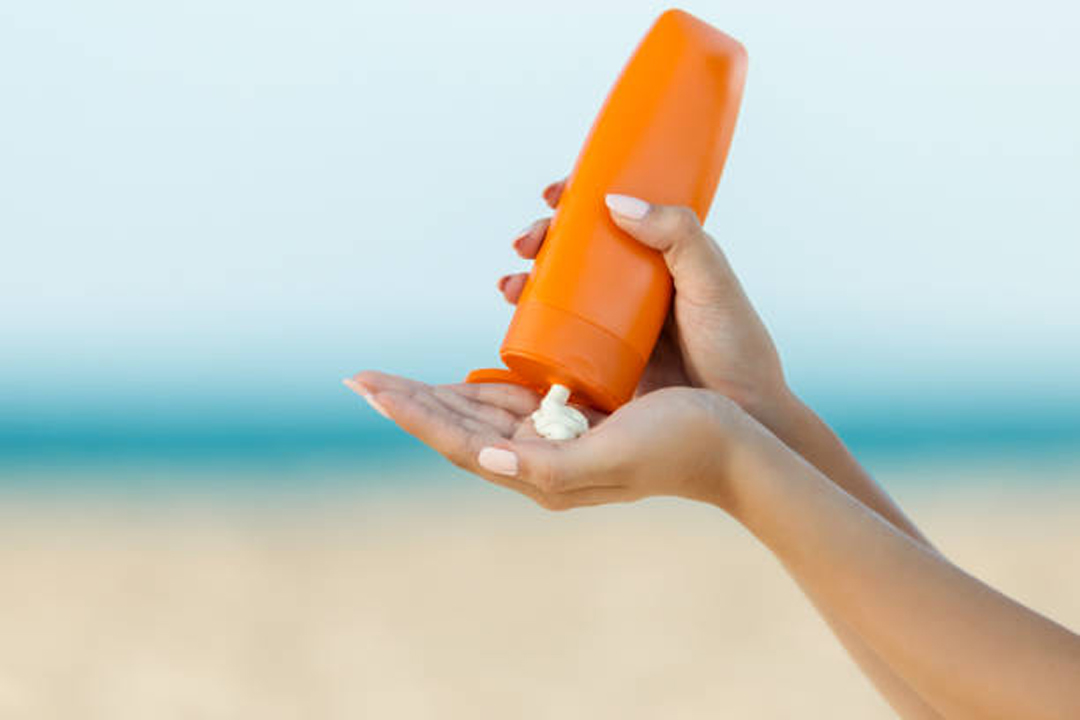Spending too much time in the sun is damaging to your skin even if you gradually tan over several weeks, rather than get sunburn. Though a suntan may protect you against sunburn, it does not protect you against accumulated radiation. All exposure to ultraviolet (UV) rays is cumulative. Thus, the sun exposure you get at age 10 can affect you adversely at age 35.
There are two types of UV radiation.
Ultraviolet A or UVA is actually a long-wave radiation that’s part of the ultraviolet spectrum. It penetrates more deeply compared to UVB, or ultraviolet B, and may causes leathering and wrinkling, damages connective tissue, and also promotes tanning, although it is less likely to cause an immediate burn. It may be crucial in the development of melanoma, the most deadly of skin cancers. (Tanning lamps emit mostly UVA rays.)
UVB is short-wave radiation. It reddens and burns the skin and causes tanning. It also promotes basal and squamous cell carcinoma and may worsen the effects of UVA.
Next time you’re out in the sun, bear in mind what the UV radiation is doing to your body. The amount of damage depends on your genetic factors, race, and ethnicity, as well as your complexion. Damage occurs the following ways:
Suntan
A tan is a sign that your skin has been injured by the sun. It results from UV rays penetrating to the skin’s inner layer to produce more melanin pigment. A tan may protect against sunburn but does not protect the skin from other damage.
Aging skin
Many of the skin changes that people associate with the aging process are largely caused by long-term sun exposure. Photo damage from excessive solar radiation results in dry, wrinkled, thickened (leathery) skin. Cumulative exposure damages connective tissue, including collagen, resulting in less elastic that is, sagging skin. Blood vessels in the skin can also be damaged, leading to purple blotches. Freckles, white (depigmented) spots, and “liver spots” may also form, as well as other discoloration.
Actinic keratosis
These are red or gray scaly patches that are precursors of certain kinds of skin cancer.
Immune system
The skin is a major part of the immune system and contains special cells (Langerhans) that detect foreign threats to the body and initiate immune responses to them. Animal studies show that UV rays weaken the function of these cells. At the same time, UV rays activate white blood cells (suppressor T cells) that interfere with the immune response. By thus undermining the body’s defenses against tumors, UV exposure may promote skin cancer and other diseases. This may be especially dangerous in people who are already immune compromised, such as those with leukemia or AIDS. However, the sun’s effects on the immune system are complex and not fully understood.
DNA damage
UV rays may promote skin cancer by causing genetic mutations that lead to abnormal cell division.
Skin photosensitivity or allergic reactions
Some people develop allergic reactions hives, bumps, or rashes every time they are in the sun. Other reactions are due to certain common medications (oral or topical) or cosmetics that increase skin sensitivity.
Other health problems
Sun exposure can worsen some medical conditions. These include cold sores (herpes simplex), lupus, erythematous, and certain other skin diseases.
Cataract risk
Though advancing age is the single greatest risk factor for cataracts, lifelong exposure to UV light appears to be a primary cause in promoting them.
How to Protect your Skin

When you’re spending any amount of time in the sun, take these steps to protect your skin.
Avoid long sun exposure, even if you are wearing a sunscreen
Minimize sun exposure between 10 AM and 4 PM, when the sun is strongest. If your shadow is shorter than your height, you’ll know the sun is strong enough to burn.
Wear protective clothing and a hat
Wear garments with a tight weave. (If you hold a shirt up to a light bulb and it allows a lot of light to pass through, the weave is probably too loose to guard against ultraviolet radiation.) A hat with a three inch brim all around offers the best protection. At the beach, lie under a beach umbrella.
If you are very sensitive to the sun, look for special UV-protective garments. These are usually treated with a chemical that helps block the rays, without making material stiff or bulky.
Use a broad-spectrum sunscreen rated SPF 15 or higher
Be sure to apply a generous amount, and put it on half an hour before you go outside. If you’re fair skinned or will be outdoors for hours, use a sunscreen with a higher SPF (sun protection factor), and protect your lips, nose, and other sensitive areas with an opaque sun block, such as one containing zinc oxide.
The slightly greater protection offered by higher SPF ratings may be needed for children, for very long exposure, in extreme climates (high altitudes or southern latitudes), or for people who are very fair skinned, who’ve had skin cancer, or who have lupus.
Never use a sunlamp or tanning parlor
Artificial tanning beds emit UVA and UVB rays, which can cause serious skin damage. UVA is now linked to the skin cancer melanoma.
Examine your skin on a regular basis
Mole that changes in shape, size or color, sores that does are not cured, any stubborn spot due to irritated skin, or slight growth are actually a mark of cancer and requires expert assessment.
Don’t let teenagers off the hook
They may be reluctant to listen, but keep preaching about the dangers of sun tanning and especially sunburns. On average, half of a person’s lifetime sun exposure occurs before age 18.
Protect all infants from the sun
Infants six months old and younger should never be exposed to the sun for extended periods because the melanin in their skin will not yet protect them significantly. When you go outside, cover the baby in a tightly woven long-sleeved shirt, long legged pants, and a wide-brimmed sunbonnet.







